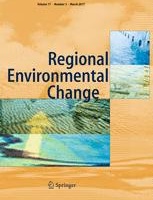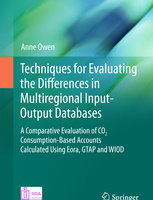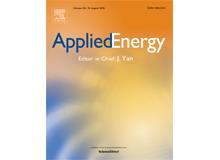Original article here.
Energy efficiency is often seen as a win-win: falling energy use benefits consumers and the environment, whilst it also allows the economy to grow. However, our recent research into energy rebound or ‘take back’ (when energy efficiency can be cancelled out by changes in people’s behaviour) suggests it may hamper the effectiveness of policy aimed at reducing energy use and its associated carbon emissions.
Why we need more policy ‘headroom’
Climate change is rightly seen as the biggest threat to our planet. Since energy related CO2 emissions are 80 per cent of global greenhouse gas emissions, a significant policy effort has been focused on reducing energy use and decarbonising energy supply. The problem of energy rebound has been known since Jevons highlighted it over 150 years ago, when he suggested that energy efficiency may increase – not decrease – energy use.
Our research estimated the size of overall national level rebound for the UK and, in line with other studies, we found evidence for a partial rebound effect: where only around 70 per cent of planned savings actually occur.
Some might wonder if this means we should abandon efficiency as part of the solution. The short answer is no. Instead, we should remember that energy efficiency policies are still working, just not quite as well as we hoped. The way to address rebound in this case is to build in sufficient policy ‘headroom’, increasing energy efficiency targets to allow for predicted energy take back via rebound.
What about the industrialising world?
We also looked at the case of China, and found evidence for possible ‘backfire’, where energy use is actually higher than before energy efficiency technologies were introduced. Why is this so? It suggests that larger rebounds occur in industrialising countries (the UK in Jevons’ time), as efficiency accelerates the cycle of lowering the cost of production, thereby increasing production, and further reducing costs.
So is rebound in this case a bad thing? Again, no. Energy efficiency was done for economic reasons long before we knew about climate change. Helping to lower the cost of energy services has had wide social benefits in the spread of lighting, transport, heating etc, greatly improving quality of life for millions across the globe. But now those benefits need to be balanced against the need to cut CO2 emissions.
The presence of backfire suggests a different response to the policy headroom suggested for the UK. If we think of renewables and energy efficiency as two policy dials, then, if the energy efficiency dial isn’t working to reduce energy demand due to backfire, the renewables dial should be turned up to compensate and ensure we can keep global warming within target limits.
Renewables ‘rebound’ is a good thing
If renewables are undercutting fossil-based power, won’t their cheaper price lead to something akin to rebound too? Perhaps, but an increase in energy use due to falling renewables prices may (in contrast to energy efficiency induced rebound) be beneficial for cutting climate change emissions, if it lowers the cost of renewables further and accelerates the displacement of fossil fuels with cheaper, clean energy.
Rebound gets a lot of interest from policy contrarians, and our research suggests that it’s a significant challenge for rapidly industrialising countries. But energy efficiency has improved lives across the world and its benefits outweigh the drawbacks. Rather than allowing rebound to cast doubt on the policy, we just need to better understand the scale of rebound, and respond appropriately: by building headroom into our energy efficiency policies in the UK and speeding up the renewables transition to deal with backfire.
This post is by Paul Brockway, research fellow at the University of Leeds. He examines roles and relationships between energy, economy and society as part of UKERC’s research programme.










